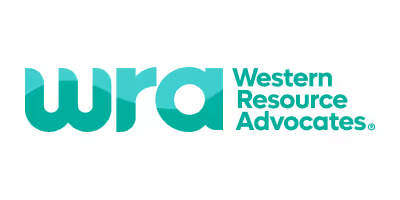We flip a switch, and voila! Instant light, refreshing AC, and the satisfying hum of our favorite appliances.
The U.S. electric grid is the beating heart of our modern society, and yet it is fast becoming a barrier to America’s stability and economic growth. Aging infrastructure — along with increasingly frequent extreme weather events and surging demand — across the U.S. is quickly becoming a serious problem that is delaying decarbonization efforts. As we continue to push our energy infrastructure to its limits, our current grid makes us all more susceptible to more and longer blackouts.
The urgency behind grid modernization stretches beyond the implementation of renewable energy technologies. The grid underpins everything we consider essential: hospitals, factories, transportation systems, and even water treatment plants. We desperately need to modernize what former Natural Resource Defense Council advocate Carl Zichella calls “the most complicated machine we’ve ever built.” Major outages can have cascading consequences, impacting public safety, economic activity, and even basic necessities. Like a fractal, the more time you spend zooming in on the overlapping technical, political, historical, and societal grid challenges, the more complicated it seems. Here’s why fixing the grid is a tall order and how smart grid technologies and other innovative solutions are driving modernization efforts.
The challenge of fixing this deep-rooted problem
Many of the electricity market structures and regulations that exist today evolved over the course of 100+ years. The grid has been pieced together section by section, not too dissimilar from Frankenstein's monster. As a result, different regions of the U.S. have different transmission networks, which have different regional transmission organizations or independent system operators governing different utilities. Each of these may have unique interests and guidelines regarding upgrades or the grid-interconnection process. Although these standards were put in place to ensure grid stability, safety, and fair compensation for excess energy fed back into the grid, in practice, they’ve greatly limited our capacity to transition away from fossil fuels.
Before connecting a new energy project to the grid, utilities and transmission system operators require a series of complex impact studies to determine how the grid must be upgraded to accommodate the added energy generation capacity. Today, clean energy developers have come to expect lengthy wait times for new projects. This backlog of wind, solar, and battery projects seeking connection to the grid has surpassed 2,000 gigawatts — note that the current U.S. grid has an electricity generation capacity of just 1,250 gigawatts.
According to a report by the American Clean Power Association, U.S. renewable energy installations declined in 2022 for the first time in five years. The group found that permitting issues, including delays in connecting projects to the grid, played a major role in the slowdown. While clean power installations are on the rise again — 2023 had the strongest third quarter on record — siting, permitting, and interconnection challenges persist. Years of underinvestment in transmission and distribution infrastructure and a lack of grid flexibility haven’t helped, either.
The intricate nature of energy policy is causing change to move much slower than what’s currently needed. Congress is currently hashing out potential reforms to help bring more clean power online faster, however those changes don’t appear likely to pass any time soon. Paying for the necessary upgrades is a challenge, too: In late 2023, as part of the Grid Resilience and Innovation Program, the U.S. Department of Energy (DOE) announced “the largest investment in America’s grid” to date — $3.5 billion. But much more is required to achieve President Biden’s goal to create a carbon-free power sector by 2035.
To accommodate more renewables, we need to expand and improve hardware, and leverage smarter software and services that create a reliable, resilient, clean, and accessible grid.
Methods of upgrading the grid
Modernizing our infrastructure with smart grid technologies and more resilient materials can improve energy efficiency, enhance responsiveness to fluctuations in supply and demand, and minimize disruption. The Interconnection Innovation e-Xchange (i2x) — a DOE program that is working with utilities, grid technology companies, and research organizations on developing more sophisticated technological solutions to interconnection problems — issued a draft report in May that lays out a variety of potential policy and technology solutions.
Here are some of the latest technological innovations that have the potential to strengthen the backbone of our society:
1. Smart grid technologies:
- Advanced metering infrastructure (AMI): These smart meters offer real-time data on energy consumption, empowering consumers to make informed choices and allowing utilities to optimize grid operations. Note: Having access to real-time data to solve problems like congestion and inform inspection services is increasingly forming the basis of most grid software solutions. (ex. Copper; Itron; Hubbell)
- Distributed energy resources (DERs): Integrating rooftop solar panels, microgrids, and energy storage systems like batteries brings power generation closer to demand, enhancing grid flexibility. (ex. NextEra Energy; Scale Microgrids; Pivot Energy)
- Grid management and automation: Implementing sensors, communication networks, and intelligent software that automates grid management can enable faster responses to disruptions and improve overall efficiency. (ex. Camus Energy; Watchwire; Siemens)
- Satellite imagery: Companies are automating the grid infrastructure monitoring process with high-resolution satellite images such that they can proactively catch potential risks like overgrown vegetation. (ex. Imageryst; DOTGIS)
2. Physical infrastructure upgrades:
- Transmission and distribution system modernization: Replacing aging equipment and expanding capacity strengthens reliability and facilitates the integration of renewable energy sources. (ex. VEIR)
- Physical resilience: Fortifying the grid against extreme weather events like hurricanes and floods improves its ability to withstand unexpected challenges. These upgrades are typically managed directly by local utilities.
- Electrifying transportation: Although electric vehicles (EVs) do increase demand, the combination of smart charging, vehicle-to-grid or bidirectional charging technology, and microgrids can turn EVs into a distributed network of mobile batteries that make the grid more resilient to outages and demand peaks. (ex. Arcadia, WeaveGrid, Synop)
These are just some of the many ways we can modernize the electric grid. It’s important to keep in mind that the specific needs and priorities of different regions of the U.S. will necessitate tailored solutions. However, by incorporating next-generation technologies, we can collectively navigate the challenges and opportunities of grid modernization, ensuring a cleaner, more reliable, and resilient energy future for generations to come.












.avif)














